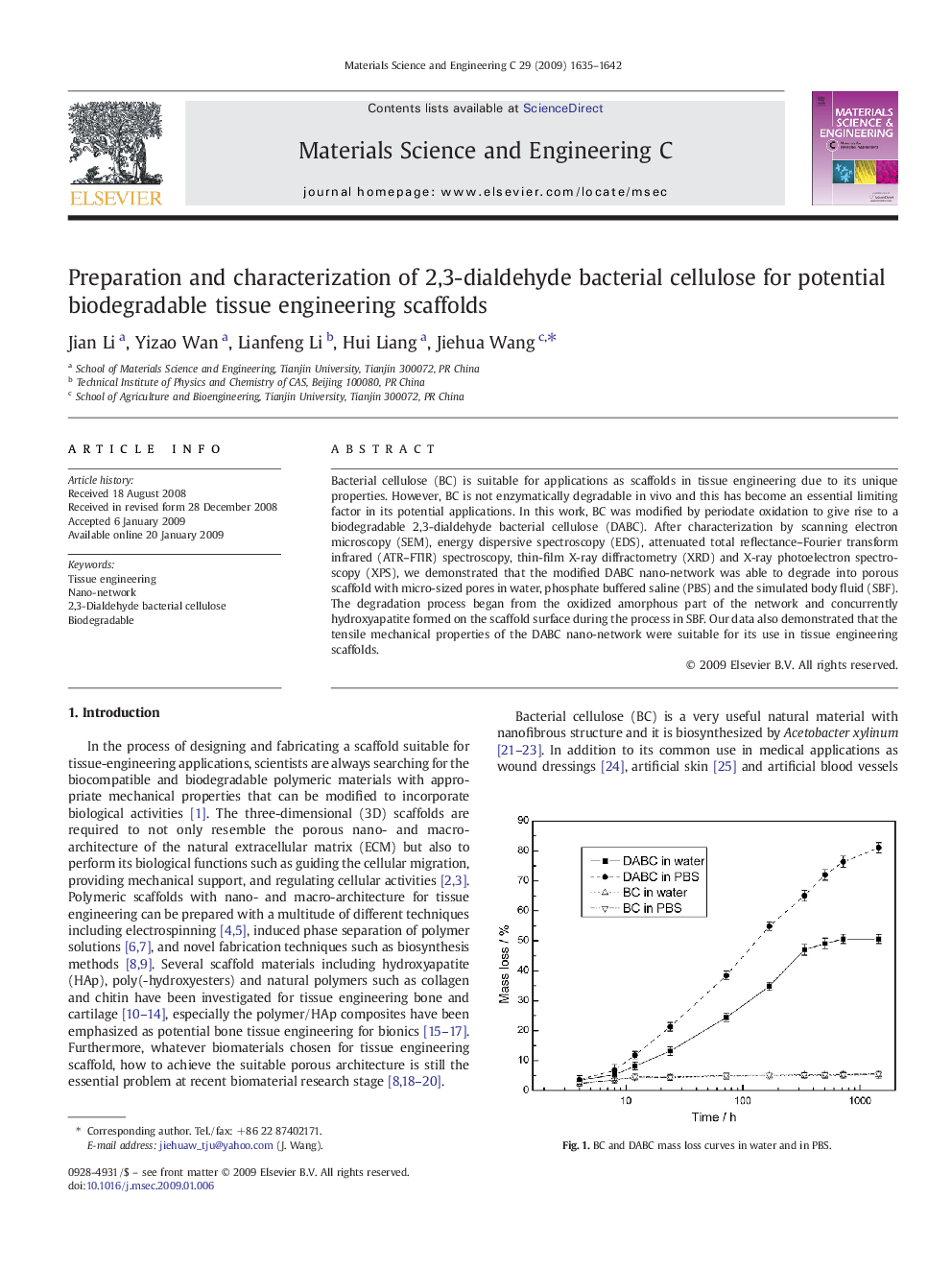| Article ID | Journal | Published Year | Pages | File Type |
|---|---|---|---|---|
| 1430702 | Materials Science and Engineering: C | 2009 | 8 Pages |
Bacterial cellulose (BC) is suitable for applications as scaffolds in tissue engineering due to its unique properties. However, BC is not enzymatically degradable in vivo and this has become an essential limiting factor in its potential applications. In this work, BC was modified by periodate oxidation to give rise to a biodegradable 2,3-dialdehyde bacterial cellulose (DABC). After characterization by scanning electron microscopy (SEM), energy dispersive spectroscopy (EDS), attenuated total reflectance–Fourier transform infrared (ATR–FTIR) spectroscopy, thin-film X-ray diffractometry (XRD) and X-ray photoelectron spectroscopy (XPS), we demonstrated that the modified DABC nano-network was able to degrade into porous scaffold with micro-sized pores in water, phosphate buffered saline (PBS) and the simulated body fluid (SBF). The degradation process began from the oxidized amorphous part of the network and concurrently hydroxyapatite formed on the scaffold surface during the process in SBF. Our data also demonstrated that the tensile mechanical properties of the DABC nano-network were suitable for its use in tissue engineering scaffolds.
